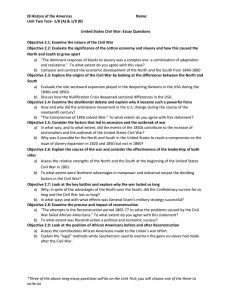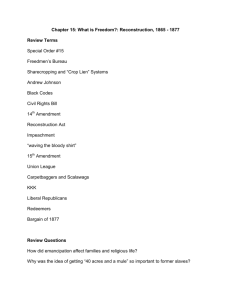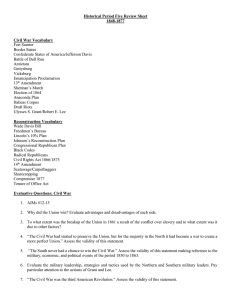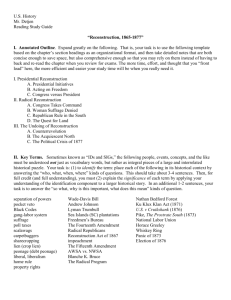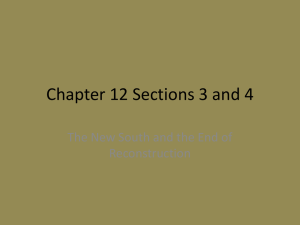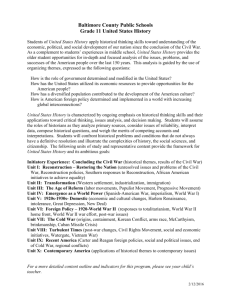Period 5: 1844-1877 - History By Herrick
advertisement
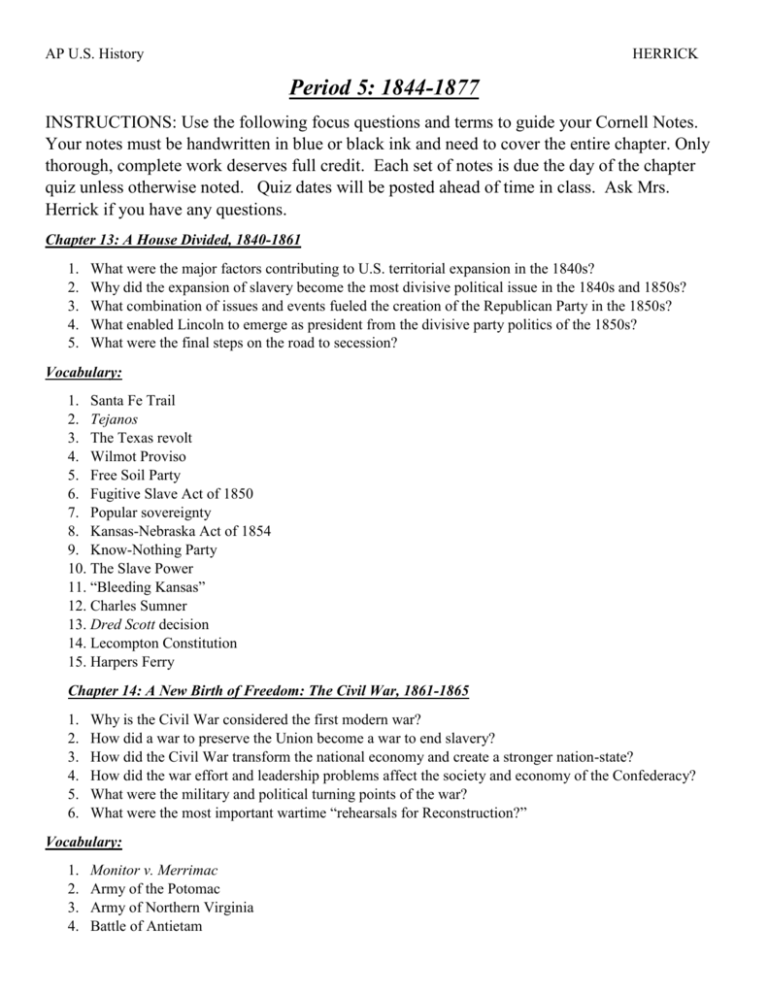
AP U.S. History HERRICK Period 5: 1844-1877 INSTRUCTIONS: Use the following focus questions and terms to guide your Cornell Notes. Your notes must be handwritten in blue or black ink and need to cover the entire chapter. Only thorough, complete work deserves full credit. Each set of notes is due the day of the chapter quiz unless otherwise noted. Quiz dates will be posted ahead of time in class. Ask Mrs. Herrick if you have any questions. Chapter 13: A House Divided, 1840-1861 1. 2. 3. 4. 5. What were the major factors contributing to U.S. territorial expansion in the 1840s? Why did the expansion of slavery become the most divisive political issue in the 1840s and 1850s? What combination of issues and events fueled the creation of the Republican Party in the 1850s? What enabled Lincoln to emerge as president from the divisive party politics of the 1850s? What were the final steps on the road to secession? Vocabulary: 1. Santa Fe Trail 2. Tejanos 3. The Texas revolt 4. Wilmot Proviso 5. Free Soil Party 6. Fugitive Slave Act of 1850 7. Popular sovereignty 8. Kansas-Nebraska Act of 1854 9. Know-Nothing Party 10. The Slave Power 11. “Bleeding Kansas” 12. Charles Sumner 13. Dred Scott decision 14. Lecompton Constitution 15. Harpers Ferry Chapter 14: A New Birth of Freedom: The Civil War, 1861-1865 1. 2. 3. 4. 5. 6. Why is the Civil War considered the first modern war? How did a war to preserve the Union become a war to end slavery? How did the Civil War transform the national economy and create a stronger nation-state? How did the war effort and leadership problems affect the society and economy of the Confederacy? What were the military and political turning points of the war? What were the most important wartime “rehearsals for Reconstruction?” Vocabulary: 1. 2. 3. 4. Monitor v. Merrimac Army of the Potomac Army of Northern Virginia Battle of Antietam 5. Contraband of War 6. Radical Republicans 7. Emancipation Proclamation 8. Second American Revolution 9. Ex parte Milligan 10. Transcontinental railroad 11. National banking system 12. Women and war work 13. “King Cotton diplomacy” 14. Southern Unionists 15. Sea Island experiment Chapter 15: “What is Freedom?”: Reconstruction, 1865-1877 1. 2. 3. 4. What visions of freedom did the former slaves and slaveholders pursue in the postwar South? What were the sources, goals, and competing visions for Reconstruction? What were the social and political effects of Radical Reconstruction in the South? What were the main factors, in both the North and South for the abandonment of Reconstruction? Vocabulary: 1. the Freedman’s Bureau 2. sharecropping 3. crop-lien system 4. Black Codes 5. Civil Rights Bill of 1866 6. Fourteenth Amendment 7. “swing around the circle” 8. “waving the bloody shirt” 9. Fifteenth Amendment 10. Literacy tests 11. Bradwell v. Illinois 12. Carpetbaggers 13. Scalawags 14. Enforcement Acts 15. Civil Rights Act of 1875 16. Slaughterhouse Cases 17. Redeemers 18. Bargain of 1877 (Compromise of 1877)
